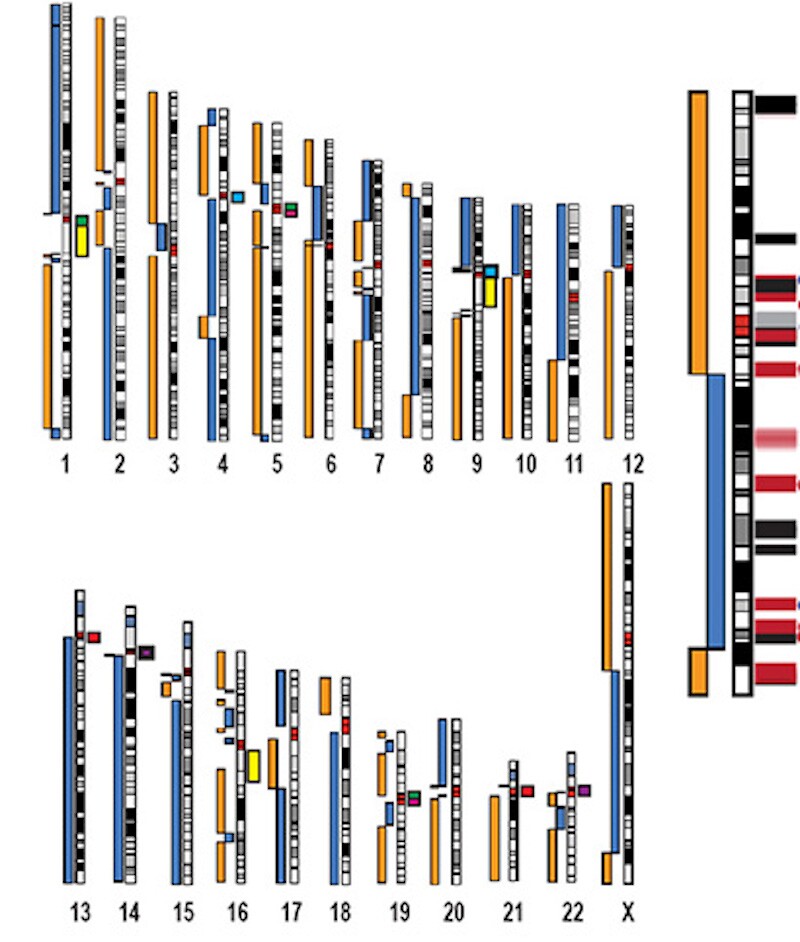The research was published in the journal Nature.
But the emphasis there is on “almost.” The first version covered a little over 92 percent of the human genome, with more than 99.99 percent accuracy. Later revisions closed some of the gaps, but others still remain.
The biggest gaps were located at the center and ends of chromosomes, which are known as centromeres and telomeres respectively. These regions are categorized by huge sections of repeating sequences, which can be hard to sort out.
In humans, the X chromosome is one of the sex-determining chromosomes passed down from parent to child. Generally, a zygote that receives two X chromosomes – one from each parent – will be usually biologically female, while an X and a Y chromosome results in a male.
In this case, the team didn’t sequence an X chromosome from a normal human cell. Instead, they studied a special type of cell that contains two identical chromosomes, part of a model genome dubbed CHM13.
To finish the puzzle, the team used new techniques that read much longer sequences at a time. One of these is what’s known as “nanopore technology,” which funnels single molecules of DNA through a tiny hole and sequences them by detecting changes in the current flow.
“These repeat-rich sequences were once deemed intractable, but now we’ve made leaps and bounds in sequencing technology,” says Karen Miga, lead researcher on the project. “With nanopore sequencing, we get ultra-long reads of hundreds of thousands of base pairs that can span an entire repeat region, so that bypasses some of the challenges.”
Using this technique, the team was able to fill in a huge gap in the centromere, comprising some 3.1 million base pairs of repetitive DNA. And these previously unexplored areas may prove to be particularly valuable to science.
“We’re starting to find that some of these regions where there were gaps in the reference sequence are actually among the richest for variation in human populations, so we’ve been missing a lot of information that could be important to understanding human biology and disease,” says Miga.



Leave a Reply
You must be logged in to post a comment.